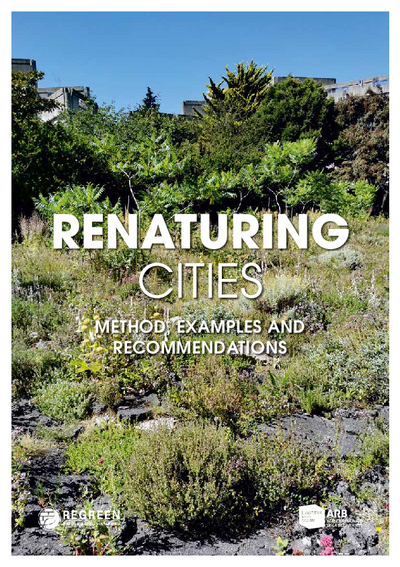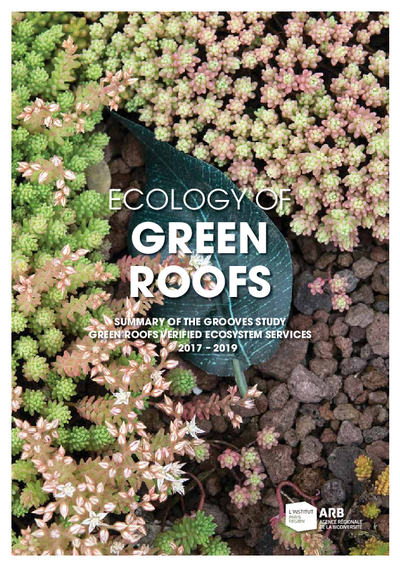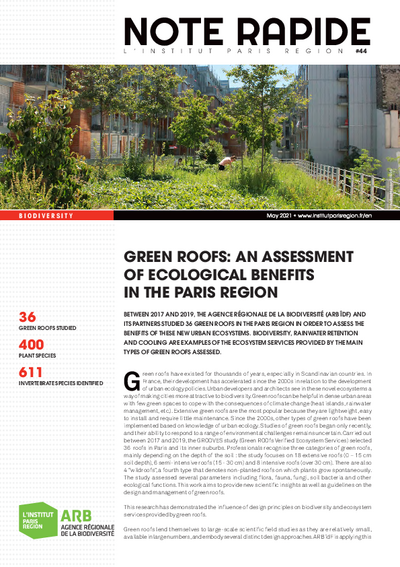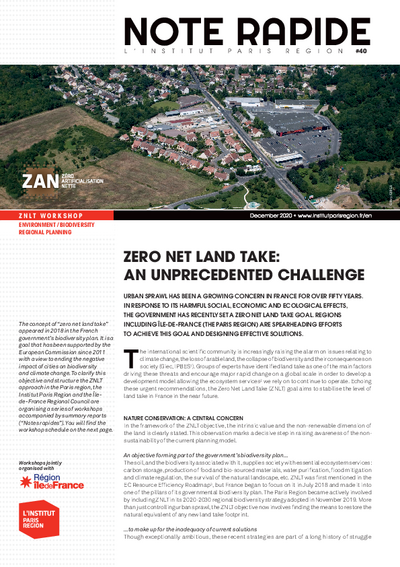Renaturing Cities
The loss of soil functions and ecosystem services is one of the major environmental challenges Europe is facing. Despite a reduction in the last decade, land take in EU28 still amounted to 539km2/year between 2012‐2018. Since the mid‐1950s, the total surface area of cities in the EU has increased by 78% while the population has grown by just 33%. To address this global problem, the European Commission has proposed in the EU Environment Action Programme to 2020 (7th EAP) to achieve ‘no net land take’ by 2050. Sealing agricultural land and open spaces should be avoided as far as possible and the focus should be on building on land that has already been sealed. The implementation of the Net Zero Land Take goal, however necessary it may be, may nevertheless result in even greater urban densification in cities that are already suffering from climate change and dwindling biodiversity. Moreover, the estimated cost and complexity of a renaturing operation above all presuppose the avoidance of any additional land take.
In this context, slowing urban growth and renaturing urban environments have become key strategies. They are all the more relevant as biodiversity is declining significantly in urban areas, the effects of climate change (runoff, flooding, urban heat islands, etc.) are intensifying and the health and wellbeing of city‐dwellers are deteriorating. Renaturing makes it possible to adapt cities to climate change and to make them more permeable to wildlife by developing nature‐based solutions. Our cities are full of areas that have been concreted or asphalted over and where nature could return and flourish. The purpose of this guide is to propose a method that will help local authorities to target urban areas where renaturing represents a key strategy to restore biodiversity, adapt to climate change and improve people’s health. Based on feedback from respondents in the field, it provides recommendations on how to implement projects in the best possible conditions.
What is renaturing?
Renaturing refers to the general idea of “returning ecosystems that have been degraded, damaged or destroyed by human activity to their natural or semi-natural state” (SER, 2004).
It can be passive (allowing nature to take its course) or active (ecological restoration, ecological engineering). Whether renaturing is passive or active, all these approaches converge towards the natural process of ecosystem recovery though they differ in terms of how much human intervention is involved.
Renaturing is often confused with desealing, which involves restoring the permeability of topsoil, often using porous drainage pavements. While renaturing involves restoring “open ground” and living soils.
Identifying areas with high renaturing potential
The GIS method developed in this guide focuses on renaturing sealed areas. The main objective is to identify urban areas where renaturing represents a key strategy for adapting cities to climate change, to halt biodiversity loss and to improve the health and the living. For each challenge (climate change, biodiversity, and health), criteria were selected based on advice from experts and available data on the case study (the Paris Region).
- Restoring biodiversity in target areas that are deficient in terms of biodiversity, by studying the size of green spaces; the percentage of plant cover; and the presence of rare habitats.
- Adapting to climate change in target areas exposed to climate risk: river flooding, runoff and urban heat islands (UHIs).
- Improving health and the living environment in target areas that are vulnerable because of lack of green spaces, air pollution and health problems relating to UHIs.
The methodology has identified 30,535.31 hectares of potentially renaturable sites, equivalent to 2.54% of the Paris Region. Sites where renaturing would bring benefits relating to all 3 key challenges (biodiversity, climate change, health) represent a total of 7,016.79 hectares.
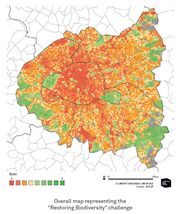 |  |  |
Successful renaturing step by step
City planners, NBS practitioners and decision-makers will be interested in learning how to depave and renaturing cities. These guidelines provide recommendations on how to implement high quality nature restoration in the best possible conditions: what diagnostics should be carried out beforehand? How can soil and plant communities be restored? What management methods should be adopted for restored areas? What tools can be used to protect them? Or what are the benefits of involving the local population in these projects?
Many examples of completed projects are presented in the guide, such as the reopening of a river in Sarcelles:
Where renaturing in the Paris Region?
Cartoviz mapping tool This Cartoviz (only available in French) was developed by the Paris Region Institute and shows the results obtained by the REGREEN method: priority renaturation areas in cities and sealed sites that could potentially be restored.
REGREEN European Project
This guide is part of the European project titled Horizon 2020 REGREEN on nature-based solutions in urban environments.
The term “nature-based solutions” refers to initiatives aimed at the conservation, management and restoration of ecosystems. Their aim is to attenuate climate change (e.g. via carbon capture and storage) and to facilitate adaptation to climate change (e.g. via protection against storms, flooding and landslides). These solutions have proved their effectiveness and can complement or replace the grey infrastructure traditionally used in regional development. The advantage of nature-based solutions is that they are multi-functional whereas grey solutions only solve one problem at a time. As well as benefiting climate and biodiversity, they have the advantage of helping to improve the living environment and health of city-dwellers at lower cost to local authorities. Nature-based solutions apply to all environments on all scales (farmland, woodland, aquatic and urban environments) and help enhance the resilience of local regions to global change. Renaturing is a way of rolling out nature-based solutions in areas that have been subject to land take and ground sealing
Further reading
REGREEN a European project on nature-based solutions.
This study is linked to the following themes :
Environment |
Urban planning


